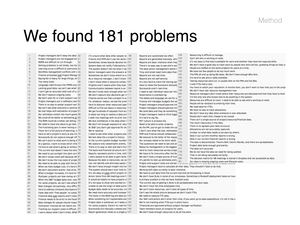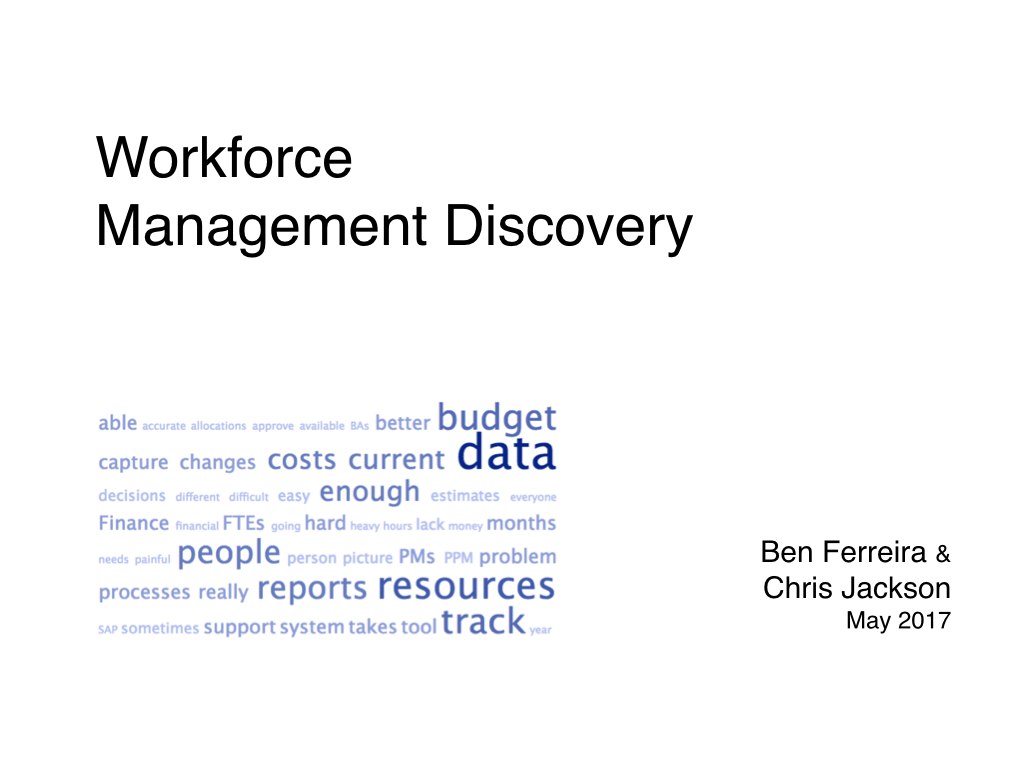Problem Discovery at MIT

MIT's IT leadership team asked the UX team to uncover the problems in our project processes for an upcoming project management tool implementation across the department. I worked with Ben Ferreira on this project. Ben is a talented designer and thinker.
Here's how we approached the discovery project:
- We interviewed 23 people from the leadership, program, finance, project management, technology, and analysis teams.
- We compiled our notes, listed 181 problems that people told us about, and identified which roles were affected by which problems.
- We used affinity grouping to categorize the problems, de-duped the list, and prioritized the list.
- We selected the top 25 problems in the following categories:
- Data
- Resources
- Reports
- Estimating
- Efficiency
- Culture
- We drafted some principles for the new project management system, for the system overall and for each of the above categories.
- We put together a presentation for the leadership team and presented our findings.
Here is the presentation. It's a bit plain, but that worked fine for our technical audience who preferred to focus on data:

Results
Members of the leadership team said they were glad to have a list of problems against which they could measure potential project management solutions. They also appreciated that the system principles we defined could serve as a high-level requirements list for RFPs and for kicking off the project.
What I learned
I learned the following:
- People love talking about their problems, unless they think no one is going to really listen. We had to overcome that distrust with some folks.
- The last question we asked each interviewee was, If you could have any superpower to do your job, what would it be? I thought that it would be a fun way to end the interviews. It was a great question, though. When several people selected Mindreading for their superpower, for example, we knew communication was an important theme.
- We could have done the initial research using a survey rather than interviews. We would have gotten more data, but we would have missed the conversations. People said things that we wouldn't haved thought to ask about. Secondly, we were getting buy-in to the research project with each interviewee, which was especially important at the leadership level.